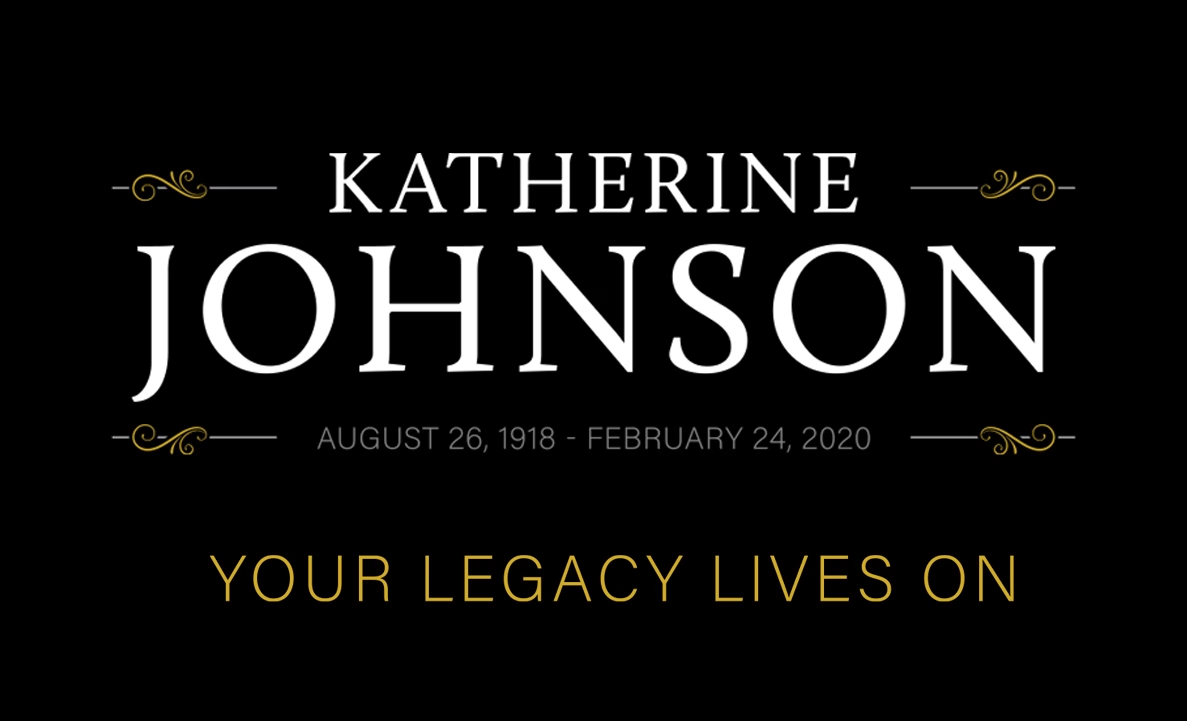Contact: Jack Bailey (304) 766-4109 Jbaile19@wvstateu.edu
INSTITUTE, W.Va. – Presidential Medal of Freedom recipient, pioneering NASA mathematician and West Virginia State University (WVSU) alumna Katherine Johnson passed away today at age 101.
“Today is a sad day for West Virginia State University, the entire Yellow Jacket Nation, and our country as we mourn the loss of one of our greatest alumnae, Katherine Johnson. From the time she first set foot on our campus to her days as a leading NASA mathematician, Katherine was always learning, inspiring and transforming every environment she entered. Her accomplishments, at a time in America when the doors of opportunity were not always open to African Americans, are nothing short of remarkable, just like the woman she was. The calculations that Katherine Johnson performed for NASA were pivotal to America winning the space race, and she will forever be an important cornerstone of American history. But beyond her great accomplishments at NASA, Katherine was a great mother, wife, daughter, sister, friend and person. These are the attributes that will best define her legacy,” said WVSU President Anthony L. Jenkins.
“I am so grateful that Katherine was able to return to campus in 2018 to celebrate her 100th birthday as we dedicated, in her honor, the Katherine Johnson Plaza, which showcases a statue that will continue to inspire our students to dream bigger for years to come. The thoughts and prayers of the Yellow Jacket Nation are extended to her daughters and the entire Johnson family at this time of grief.”
Johnson received the Presidential Medal of Freedom in 2015, the highest award that can be bestowed upon a civilian. A native of White Sulphur Springs, West Virginia, Johnson first came to Institute at the age of 10 to attend the high school that used to be part of West Virginia State’s campus. After graduating from high school at age 15, she immediately enrolled in college classes at West Virginia State. Johnson excelled in her studies and graduated summa cum laude in 1937 at the age of 18 with bachelor’s degrees in mathematics and French.
Johnson’s pioneering work as a “computer” at the National Advisory Committee for Aeronautics (NACA) and later at NASA, was widely recognized following publication of the book, “Hidden Figures,” and by the movie of the same name. As a computer, she calculated the trajectory for Alan Shepard, the first American in space. Even after NASA began using electronic computers, John Glenn requested that she personally recheck the calculations before his flight aboard Friendship 7.
In her later NASA career, Johnson worked on the Space Shuttle program and the Earth Resources Satellite and encouraged students to pursue careers in science and technology fields. Johnson worked at the agency until 1986, when she retired after 33 years of service. During her tenure at NASA, she received many prestigious awards. Among them were the NASA Lunar Orbiter Award and three NASA Special Achievement Awards. She was named Mathematician of the Year in 1997 by the National Technical Association.
In September 2017, NASA’s Langley Research Center in Hampton, Virginia, named its newest building after her — The Katherine G. Johnson Computational Research Facility.
On Aug. 25, 2018, the day before Johnson’s 100 birthday, WVSU dedicated an endowed scholarship and plaza featuring a statue in Johnson’s honor.
Follow on Facebook, Instagram and Twitter .

Presidential Medal of Freedom Recipient, West Virginia State University Alumna Katherine Johnson Passes Away at 101
February 24, 2020